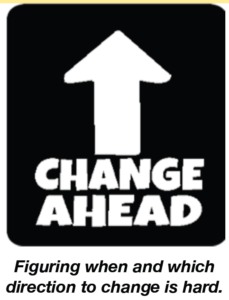So, when should a company self-disrupt? Or, more importantly when should you self-disrupt.
 Companies face these disruptor questions:
Companies face these disruptor questions:
1. What are possible triggers to start (your) self-disruption?
2. When should they (you) self-disrupt?
3. How quickly should they (you) self-disrupt?
4. How should they (you) self-disrupt?
5. What’s their (your) final destination?
6. How are they (you) going to monetize (make money)?
All companies are searching for the next killer work model, app, platform, product, or idea. It’s too late when there are not enough products in the pipeline to create a sustainable competitive advantage. Companies learned this lesson the hard way.
 When products go stale, stagnation and revenue loss are not far behind. The wake-up call to change the existing product paradigm may come from a pandemic, competitor or new technology. When the wake-up sounds to self-disrupt, it results in management and company panic. Why? Well, killer ideas can be copied quickly. Legal protections last only so long before someone copies or enhances an existing product or service. In information intensive companies such as consultancies, the greatest ideas can be replicated in months. History shows: Today’s hot idea is tomorrow’s fad and the next day’s has-been company.
When products go stale, stagnation and revenue loss are not far behind. The wake-up call to change the existing product paradigm may come from a pandemic, competitor or new technology. When the wake-up sounds to self-disrupt, it results in management and company panic. Why? Well, killer ideas can be copied quickly. Legal protections last only so long before someone copies or enhances an existing product or service. In information intensive companies such as consultancies, the greatest ideas can be replicated in months. History shows: Today’s hot idea is tomorrow’s fad and the next day’s has-been company.
Story: General Electric (GE) had a horrible 10 years. Dozen or so years ago, it was the most valuable company in the world. It had the best management and training systems. It had the best culture of a large organization. It could do no wrong. Then, its paradigm shifted.
It started making bad business decisions based on old assumptions. It did not adapt. In the last 10 years, its market capitalization has gone down about 90%.
Work Lesson Earned: Legacy companies are challenged with internal impediments, such as static cultures, status quo thinking, dated technologies, legacy processes, and antiquated management systems. The systems have been around a long time and worked very well. These systems promoted and reinforced the status quo.
Now, GE wants to operate like a software startup. So, how do you take a mega-company and make it into an adaptive, lean, agile, and mean startup? Good luck with that! Does your business or you need to self-disrupt? How? When? WHY?